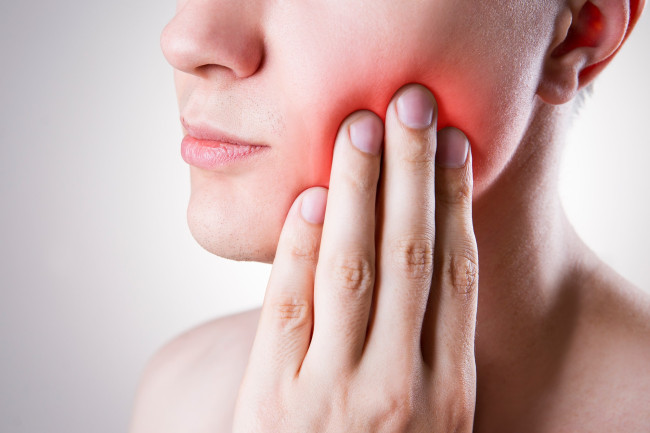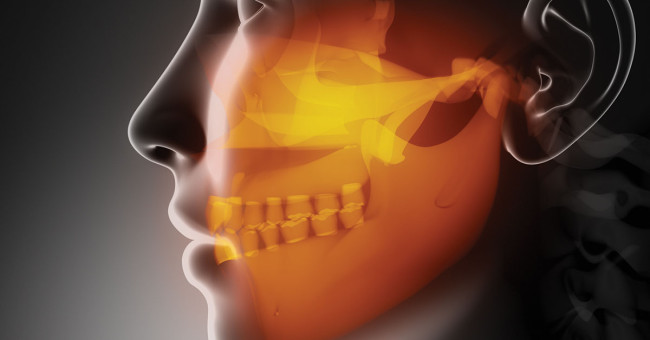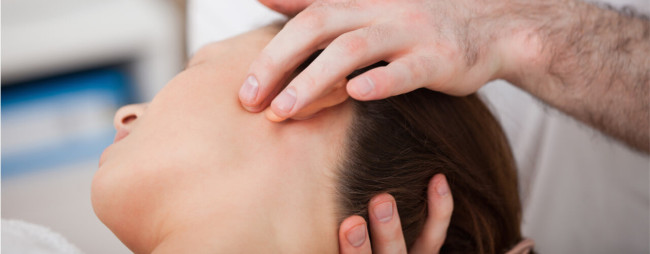Temporomandibular joint Disorder
Temporomandibular joint (TMJ) It is a joint that connects the lower jaw to the base of the skull. Disorders of the jaw joint
or Temporomandibular joint Disorder (TMD) It can cause pain in both the jaw joint and the muscles involved.
The causes of TMD are often vague or difficult to determine. This is because pain in the jaw joint can be caused by a combination of factors such as heredity, osteoarthritis.
Accident in the jaw area or having clenched teeth consciously and unconsciously
This will affect the jaw joint that will be subjected to more force. Fortunately, in most patients the pain associated with TMD is temporary.
and recovered with supportive treatment adjust one's behavior or perform non-surgical treatment But still.
in some patients with chronic symptoms or if supportive therapy is ineffective, surgical treatment may be required.
But nowadays, Dr. Thanaphorn Laksameephichet (Doctor Jik) has invented a new treatment method without surgery. With a special device called V Shape Aligner, which is the doctor's patent. The only one in Thailand and in the world.
Where to treat?
Ban Rak Dental Clinic, all 3 branches, and more than 30 network clinics nationwide. See the full list of clinics.

- Pain or pain in the jaw area
- Pain or pain in one or both jaw joints
- Pain around the ear
- Headache, migraine without known cause
- Difficulty chewing or having pain when chewing
- Facial pain
- There is a jam in the jaw joint. This may be either open or unable to cover your mouth.
There are also other common symptoms that are difficult to observe or identify, such as tinnitus, vertigo, insomnia, staggering, fainting, depression, not getting enough sleep, waking up sleepy, snoring, stopping breathing while sleeping, bruxism, tooth wear, scapula pain, neck and shoulder pain, occipital pain, eye socket pain, tilted neck, and shoulders, etc. If you have any of these side effects without any apparent cause, you should contact us for a free diagnosis.
Cause
The movement of the jaw joint is hinged together with sliding. The exposed parts of the bones are covered with cartilage. Which will compete with a herniated disc that serves to make the movement of the jaw joint smooth and uninterrupted. Therefore, the cause of pain in TMD can be caused by
- The cervical disc has erosion. or moving out of position
- The cartilage of the joints is damaged by osteoarthritis.
- The joint is affected by external factors.
But from the aforementioned Most of the time, the cause of TMD can be caused by other or unknown risk factors.

- Diseases that cause joint degeneration, such as Rheumatoid arthritis, Osteoarthritis
- Injury to the jaw bone
- chronic tooth clenching
- Some connective tissue disease conditions that affect the jaw joint.

- Be wary of habits or behaviors that put stress on the jaw joint, such as clenching your teeth, biting hard.
- Eat soft foods, cut them into smaller pieces for easy chewing. Avoid chewing gum.
- Stretching and massage, in which the treating doctor will teach you how to stretch/massage the masticatory muscles.
- Hot/cold compress as recommended by the doctor
Diagnosis
The dentist will perform the examination by talking, asking questions and examining the jaw joint. By listening and feeling the jaw joint while opening and closing the patient's mouth. It also checks whether the movement of the jaw joint is in the normal range or not. This is combined with pressing the area around the jaw joint to look for pain points. and may be sent for additional laboratory tests such as
- X-rays of the mouth and jaw to check for other abnormalities that may be causing pain
- 3D radiography to examine the condition of the bones in the jaw joint
- Electromagnetic examination of the intervertebral discs of the jaw joints and tissues around the joints
- Sometimes the diagnosis can be complicated. Therefore, the doctor may use a small endoscope into the joint to examine the inside of the jaw directly. to get a more accurate diagnosis
Treatment
In some patients The pain from TMD may be relieved and resolved on its own. But if the symptoms do not disappear Your doctor may recommend treatment with a variety of therapies. and may use more than 1 treatment method at the same time, such as
- Taking painkillers Non-steroidal anti-inflammatory drugs, such as Ibuprofen
- Tricyclic antidepressant as Amitriptyline Drugs in this group are usually used to relieve stress. reduce anxiety But in the case of using a small amount, it will help reduce pain, reduce tooth clenching. and help you sleep better
- Muscle relaxants This group of drugs helps reduce muscle spasms. This may be one of the causes of TMD. The duration of medication may last from a few days to several weeks depending on the individual patient's condition.
which is the end treatment It can't be cured, but our V shape aligner can be treated by...
. . Treatment of tooth structure with V shape aligner, together with orthodontic and veneer, reduces surgery, saves money and time. is the treatment at the root cause therefore giving better results than treatment at the root cause

If you have symptoms like this but are not sure, you can check or ask for a free consultation. to help the jaw joints align properly. Solve problems at the root cause. Starting to see results from the first 3 weeks.
